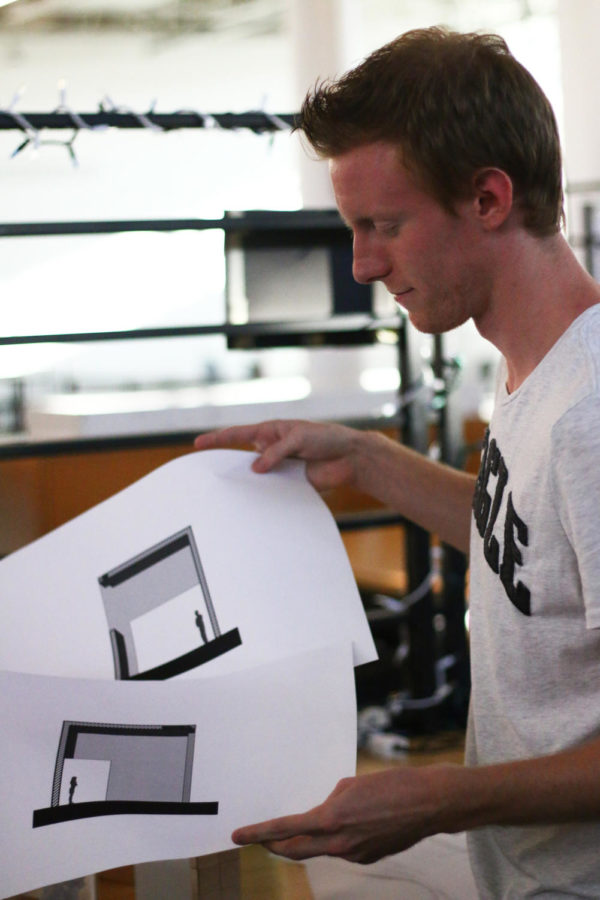Design students carve out passion
Emily Blobaum/Iowa State Daily
Cale Unzicker, sophomore in architecture, looks over designs Monday afternoon.
September 23, 2015
Design students can be spotted easily around campus by their enormous black bags, but others may not know about the work that goes into filling those bags.
They’re known to have some of the heaviest workloads in the university, thanks to highly competitive programs. It could be considered lucky to spy them outside of their studios.
Their reputation for spending copious amounts of time holed up in the studio isn’t necessarily true; they’re still college students trying to find a healthy balance of school, clubs and social life.
“If you want to be in a major in design it’s kind of a given that it’s one of your passions, but it’s not necessarily going to be your only passion,” said Jessie Laughridge, sophomore in architecture.
Cale Unzicker, sophomore in architecture, has always known what he’s wanted to do with his life.
“I feel like I’ve always been more imaginative, so making my own little spaces of living, my own little worlds, kind of, would be cool,” Unzicker said. “Actually being in the major so far this year has wholeheartedly reinforced it. It just feels right.”
Unzicker was in the pre-design program before he moved to the architecture program. This is when he and other designers first experienced all of the time devotion associated with a major in the College of Design. Time spent in studios lasts several hours, and if it isn’t used effectively, days and nights could get mixed together.
Unzicker believes his current work in the architecture program is more comprehensive, but the difficulty level has also increased compared with pre-design.
“[In pre-design], you’re starting out so things are going to be easy for you. You don’t have as harsh of restrictions and expectations,” he said.
Unzicker said in the beginning of the architecture program, he had an ubiquitous feeling of “I don’t know what I’m doing.”
“It makes it hard to kind of keep up and feel secure about your work because you don’t know if it’s right,” Unzicker said. “And that’s the thing, there’s a lot of different ways of being right in this college.”
The style of assignments change with specialization. In pre-design, assignments incorporate different genres of design. The architecture program places a greater focus on technicalities, though it can still be abstract and creative.
The amount of work stays roughly the same throughout the experience. Time is a major factor, and it’s easily wasted with a hazy idea of right and wrong. Students, such as Laughridge, accept this as an unavoidable part of the major.
“Because it is one of your passions you have to make sacrifices sometimes by saying like, ‘Alright, I can’t go and do this with my friends tonight, I really have to get this work done,’ but I think that’s true with any major,” Laughridge said.
Design students choose how much time they want to spend in the studio outside of what is required to some extent, but they’d sometimes rather be in the studio than anywhere else.
“We’re all in here so often that your studio becomes your family,” Unzicker said of the phenomenon.
A lot of weeding out takes place in design. Design students who end up dropping out of the program typically do so before they get into a program.
“You kind of feel bad when it’s someone you know who does [drop out],” Unzicker said. “I feel like it’s kind of strengthening because they didn’t make it but you did.”
The students who stay feel the rewards.
“Me, personally, coming to the studio and experiencing everything we do daily, it just kind of revives me a little,” Unzicker said. “Those in-class critiques that many, many other people might hate or fear, I personally think are riveting.”
Architecture students also regularly take field trips to gain exposure, and second-year students recently returned from a trip to Kansas City, Mo.
“We kind of get to see what life might look like after graduation by visiting different firms,” Laughridge said.







